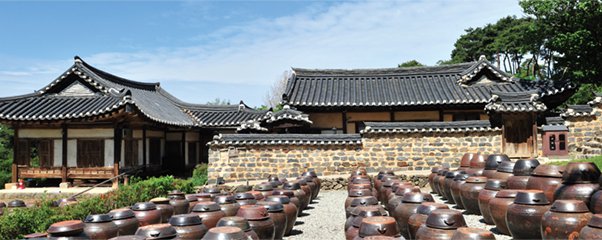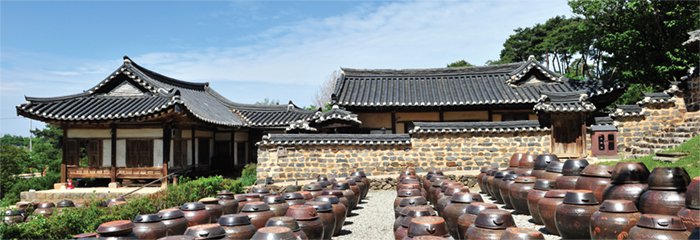Housing

Housing
Korean people have developed unique architectural techniques to build housing that is properly adapted to the natural environment, providing dwellers with better protection. One of the distinctive features of the hanok (traditional Korean house) is an underfloor heating system called ondol. Ondol, which literally means “warm stones” and was developed during the prehistoric period, refers to the system of channels running beneath the stone floor of a room through which heat is delivered from the fireplace in the kitchen. It is also designed to effectively draw out the smoke through the under-the-floor passages connected to the chimney.

Another architectural feature is the board-floored room called maru located at the center for multiple purposes. The room is usually larger than other rooms and is raised from the ground to allow warm and cold air to freely circulate under it. This creative natural air-conditioning system ensures a cool living environment during the summer. In other words, the traditional Korean house is scientifically designed to incorporate these smart ondol-maru systems in harmony. The roof is typically covered with either giwa (tiles) with different colors or byeotjib (rice straw). While most of the roof tiles are dark gray, some exhibit more vibrant colors as demonstrated, for example, by Cheongwadae, the official residence of the South Korean President, which literally means “Blue House” because it is covered by blue roof tiles.
While traditional Korean houses are generally wooden structures, they can survive as long as other buildings made with other materials if properly taken care of. Presumed to have been built in the early 1200s, the Geungnakjeon Hall of Bongjeongsa Temple in Andong, Gyeongsangbuk-do, is Korea’s oldest extant wooden building. The ideal location for hanok is believed to have hills or mountains at the back of the house to prevent the cold wind and a stream or river in front to ensure easy access to water. Houses built in such a place create a great harmony with the surroundings, attracting more and more admirers at home and abroad.
These days, over 60% of Seoul’s population live in modern apartments, but, interestingly, these tall, multistoried buildings are almost without exception furbished with a heating system inspired by the age-old ondol system. Similarly, newly built detached houses are also reliant on its legacy to heat the floor, although the traditional heat passages are now replaced with under-floor metal pipes with running water heated either by gas or electricity. This traditional Korean heating system has been gaining more popularity not only in South Korea but also in other countries with wide variations in daily temperature.
